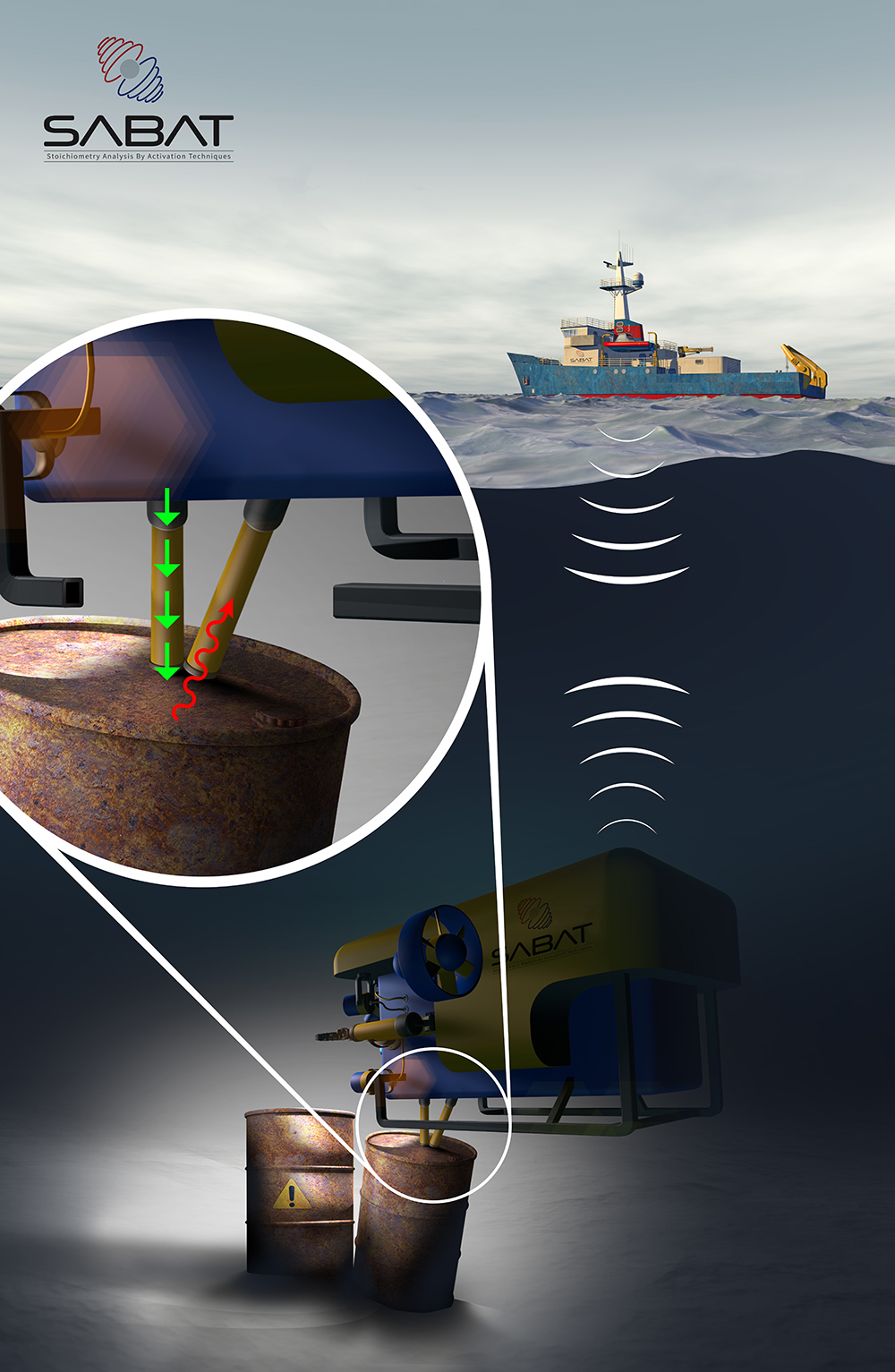SABAT (Stoichiometry Analysis by Activation Techniques)
The aim of the SABAT project is to design and construct a prototype for non-invasive detection of hazardous materials in the aquatic environment, which is characterized by high sensitivity and low noise (reduction of background), which will allow for accurate detection of hazardous substances, even burried deep in the bottom of the water reservoir. Additionaly, it will allow to determine the density distribution of the dangerous substance in the tested object.

The growing scale of the devastation which can be caused by even a single terrorist attack requires more effective methods for the detection of hazardous materials. Limitations of commonly used methods demand for mobile devices allowing for effective and rapid recognition of the threat. Currently, the state of the art methods of detecting hazardous substances provide determination of the density distribution and the shapes of tested subjects, but do not allow for exact identification. Therefore, detection of any suspicious object requires additional verification. Disadvantages of the above mentioned methods are not present with devices based on a stoichiometry analysis by irradiating the substance with neutrons and measuring the energy spectrum of gamma quanta emitted. This allows for the detection of explosives without endangering the life and health of sapper making e.g. de-mining. The suspected item can be irradiated with a flux of neutrons produced using compact generator based e.g. on deuteron-tritium fusion, where deuterons are accelerated to the energy of 0.1 MeV and hit a solid target containing tritium. As a result of the fusion an alpha particle is created together with the neutron, which is emitted nearly isotropically with a well-defined energy equal to about 14.1 MeV. Neutrons are absorbed or scattered inelastically on nuclei of the investigated object exciting them, for example in reaction:
As shown schematically in Fig. 1 nuclei de-exciting to the ground state emit gamma quanta which energies depend on the type of nuclei. These quanta can be detected by e.g. a germanium detector providing a very good energy resolution. Taking into account the probability of interaction of neutrons with various nuclei, the geometrical arrangement and the performance of the detector to register gamma quanta with a given energy we obtain the number of atoms of all the elements that build the interrogated object. Taking into account cross sections for neutron inelastic scattering with different nuclides and the detection efficiency of γ quanta we can reconstruct the number of atoms of each element building the object and compare them with the known stoichiometry of hazardous substances stored in the database. The whole detection unit can be mounted on a small submarine steered remotely from a ship.
Implementation of the resulting technology will increase the safety of sailors, civilians and public services, in particular in the Baltic Sea. It will also allow for cheaper and more efficient demining of seas and will improve the safety of navigation and engineering work on their bottoms. Detection and identification of sunk remnants of war are also crucial in the still ongoing work of purifying the Baltic Sea from hazardous substances.
The SABAT project is realized in a close cooperation with Centre for Technology Transfer of the Jagiellonian University (CITTRU) and was supported by the National Research Centre.
Streszczenie w języku polskim
Ograniczenia standardowych metod wykrywania materiałów niebezpiecznych skłaniają do poszukiwania alternatywnych rozwiązań. Jedną z najbardziej obiecujących metod jest atomometria, polegająca na analizie stechiometrii badanej substancji za pomocą wiązek neutronów. Napromieniowany neutronami przedmiot emituje kwanty gamma, których energia jest charakterystyczna dla każdego pierwiastka. Pomiary energii tych kwantów pozwalają zatem na określenie składu chemicznego badanej substancji. Dotychczas dokonywano ich za pomocą detektorów półprzewodnikowych, które wymagają chłodzenia i obniżają tym samym mobilność urządzenia. Badania mają na celu znalezienie innych rozwiązań, które zapewniłyby lepszą mobilność.
Members
Former members
Recent publications
- Non-invasive detection of hazardous materials with a thermal-to-epithermal neutron station: a feasibility study towards practical application
- Effect of temperature on gamma radiation shielding capabilities of bauxite-based refractory concrete
- A new detector concept based on the prompt gamma radiation analysis for In vivo boron monitoring in BNCT
Recent theses
- Characterization of gamma quanta detector for the SABAT sensor
- Neural networks application in hazardous materials recognition
- Application of 3D computer graphics techniques usedin video games for Monte Carlo calculationsof multi-particle transport code
- Zrównoleglenie i optymalizacja algorytmów w pakiecie symulacji wykrywacza materiałów wybuchowych
